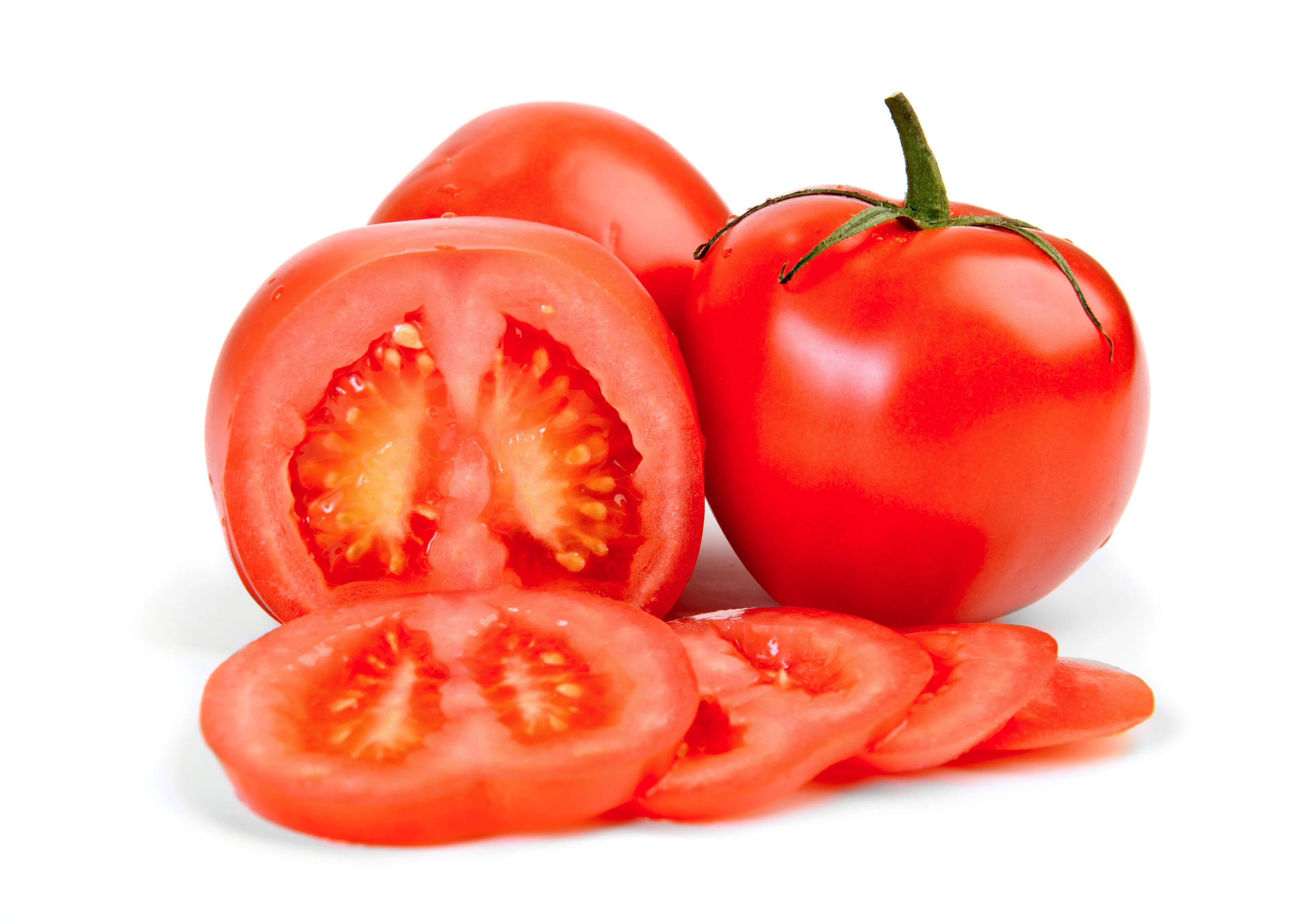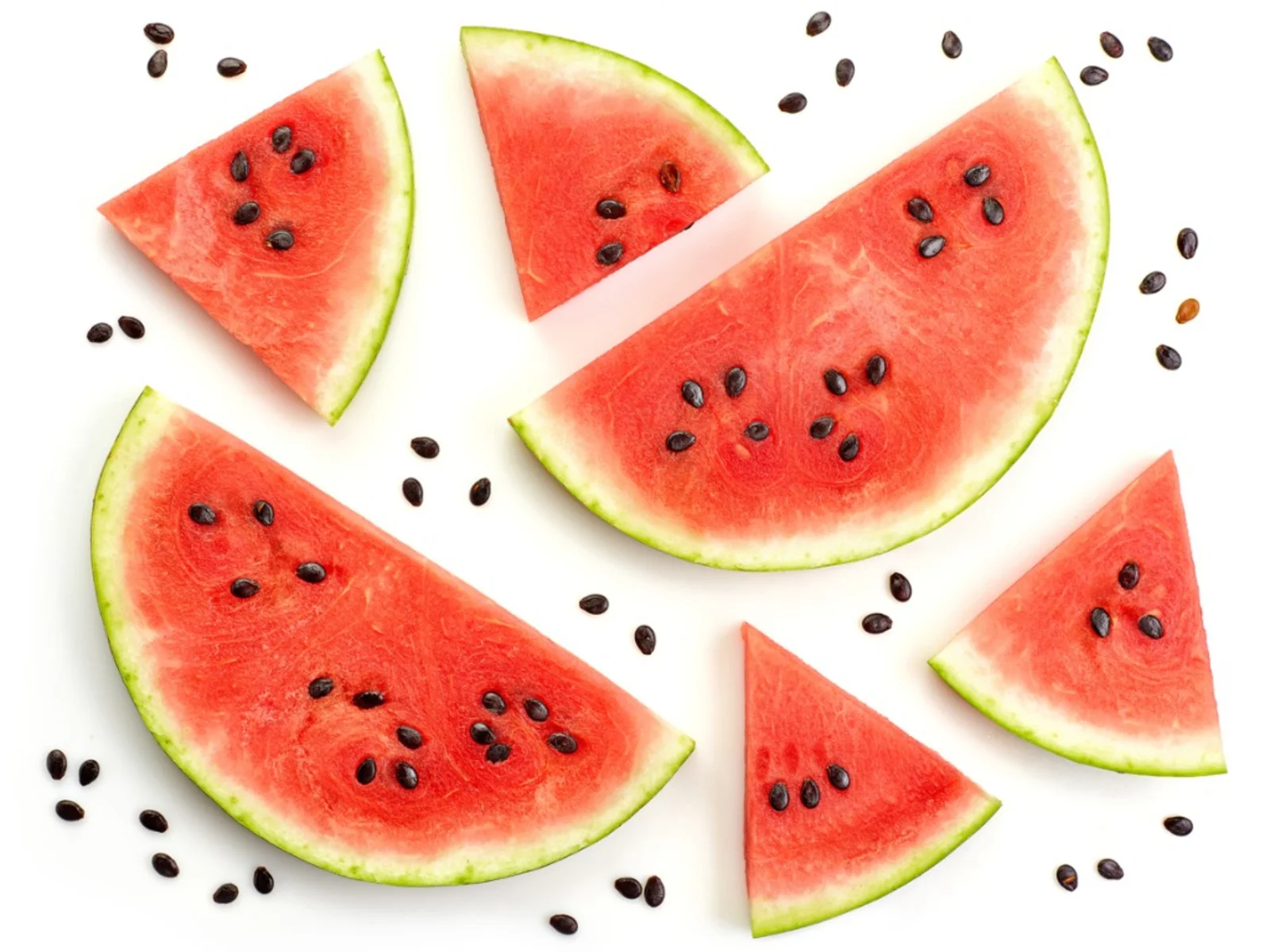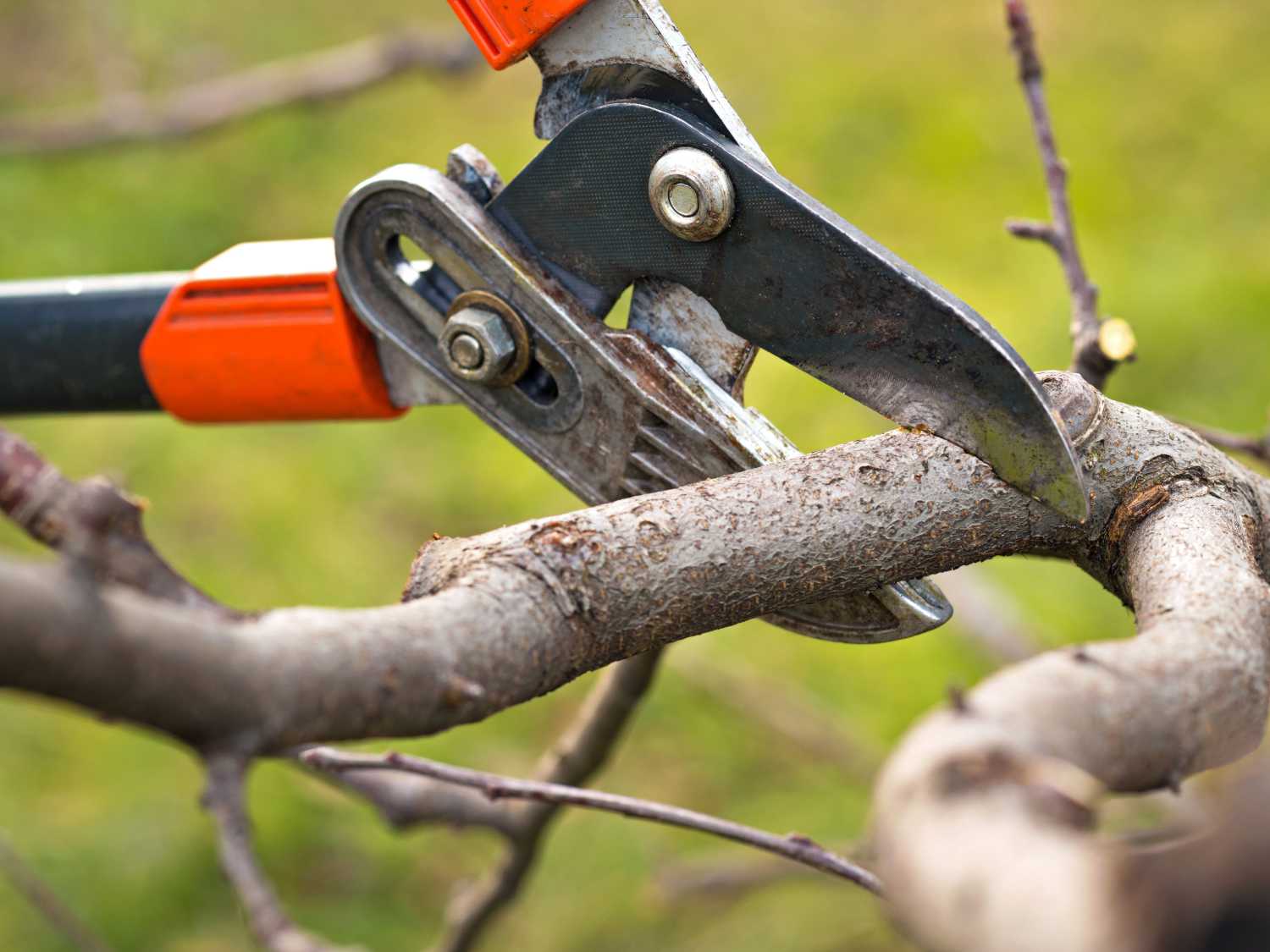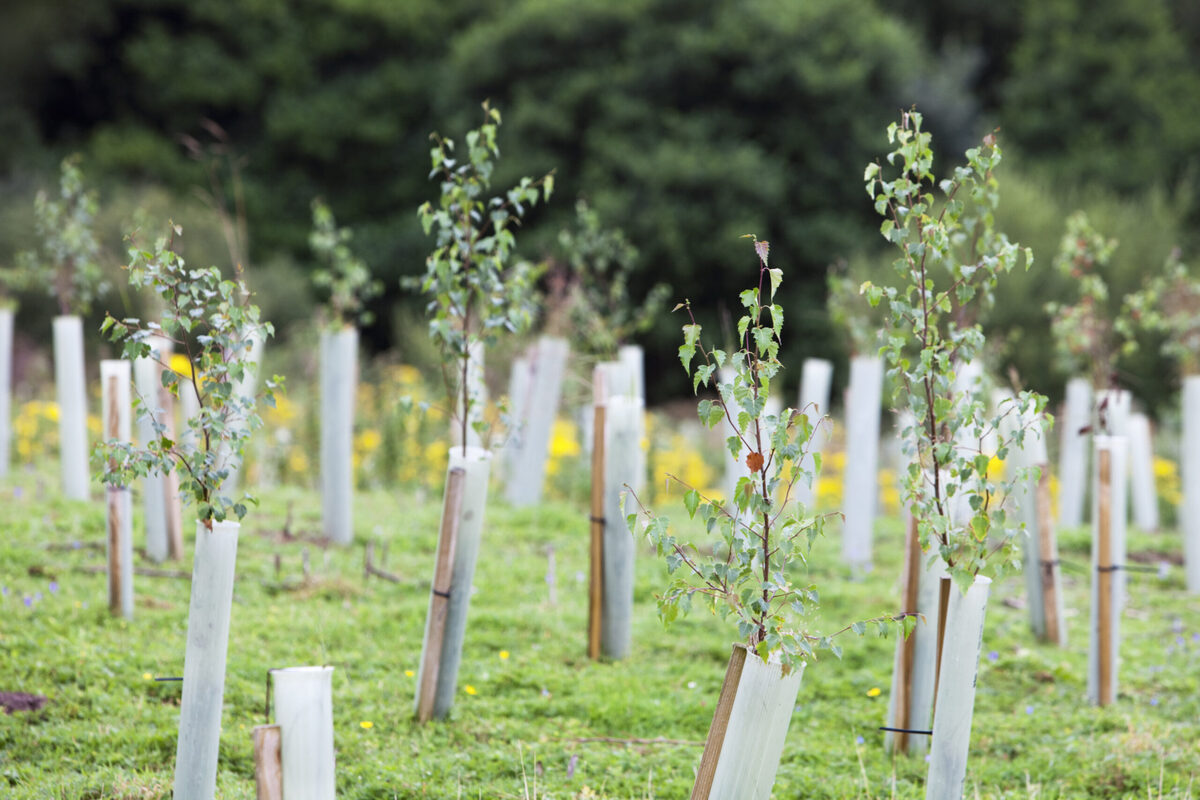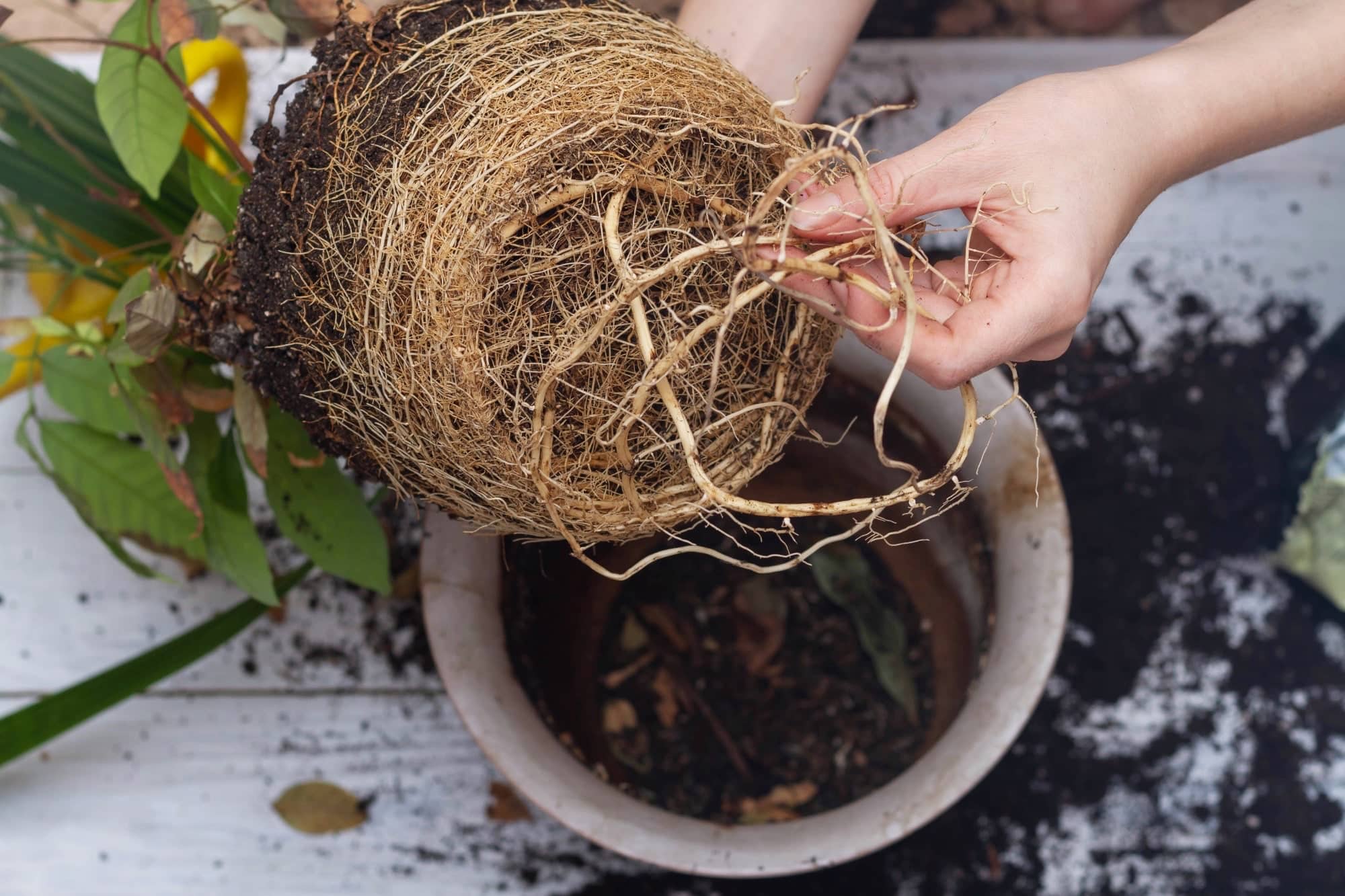Home>Types of Gardening>Edible Gardening>When Should You Plant Apple Trees


Edible Gardening
When Should You Plant Apple Trees
Modified: February 7, 2024
Learn the ideal timing for planting apple trees in your edible garden with helpful tips from our expert gardeners. Start your own orchard today!
(Many of the links in this article redirect to a specific reviewed product. Your purchase of these products through affiliate links helps to generate commission for Chicagolandgardening.com, at no extra cost. Learn more)
Table of Contents
Introduction
Welcome to the wonderful world of edible gardening! There’s nothing quite as satisfying as growing your own fruits and vegetables, and what better place to start than with apple trees? Whether you have a spacious backyard or a small balcony, apple trees can be a beautiful and rewarding addition to your edible garden. But before you roll up your sleeves and start planting, there are a few factors to consider to ensure successful growth and a bountiful harvest.
In this article, we will explore the optimal time to plant apple trees and the various factors that should be taken into account. By understanding these key elements, you’ll be well-equipped to make informed decisions for your particular gardening space and climate.
From considering the suitable hardiness zones and understanding the importance of soil conditions to selecting the right tree variety and timing your planting, each step plays a crucial role in the overall success of your apple tree. Investing time and effort into proper preparation and ongoing care will undoubtedly yield deliciously juicy apples for years to come.
So, whether you’re a seasoned gardener looking to expand your collection or a beginner eager to embrace the joys of edible gardening, read on to discover the important factors to consider when planting apple trees. Let’s dig in and get started!
Factors to Consider
When it comes to planting apple trees, there are several key factors to consider in order to maximize the chances of success and ensure a thriving tree that will bear plentiful fruits. These factors include climate and hardiness zones, soil conditions, pollination, tree varieties, and the timing of planting.
Climate and Hardiness Zones: Apple trees thrive in specific climate conditions and are typically suited to certain hardiness zones. It is important to understand the climate and hardiness zone of your region to choose apple tree varieties that will be well-adapted and have the best chance of survival. Consult a hardiness zone map to determine which types of apple trees are recommended for your specific area.
Soil Conditions: Apples thrive in well-draining soil with a slightly acidic pH level. Before planting, it is essential to assess your soil’s composition and pH level. If your soil is heavy and clay-like, consider amending it with organic matter to improve drainage. Conduct a soil test to determine the pH level and make any necessary adjustments to ensure the soil is within the ideal range for growing apple trees.
Pollination: Most apple tree varieties require cross-pollination to produce fruit. This means that having at least two compatible apple tree varieties within close proximity is crucial for successful pollination. Pay attention to the pollination requirements of the apple tree varieties you choose and ensure you have suitable pollination partners nearby.
Tree Varieties: There is a wide range of apple tree varieties to choose from, each offering unique flavors and characteristics. Consider factors such as taste preferences, disease resistance, and maturity time when selecting apple tree varieties for your garden. Research and choose varieties that are well-suited to your climate and desired harvest time.
Timing of Planting: The timing of the planting is essential for the survival and establishment of apple trees. Generally, the best time to plant apple trees is in the early spring or late fall when the weather is cooler and the tree can adjust to its new surroundings more easily. Avoid planting during periods of extreme heat or cold, as these conditions can stress the tree and impede its growth.
By considering these factors and making informed decisions, you can ensure optimal conditions for your apple trees, setting the stage for a healthy and productive garden. Remember, proper planning and preparation are key to the success of your edible garden.
Next, we will delve deeper into each of these factors, providing you with the knowledge and guidance you need to make the best choices for your specific gardening situation.
Climate and Hardiness Zones
Understanding the climate and the hardiness zones in which you reside is essential when it comes to planting apple trees. Apple trees thrive in specific climatic conditions and are typically suited to certain hardiness zones.
Climate: Apple trees prefer regions with moderate temperatures where they can experience a winter dormancy period. They require a certain number of cooling hours during this time to ensure proper growth and fruit development. The ideal climate for apple trees is one with cool winters, mild springs, and warm summers.
Hardiness Zones: Hardiness zones are defined geographic areas based on average annual minimum temperatures. They categorize plants according to their ability to tolerate different temperature ranges. Knowing your hardiness zone helps you select apple tree varieties that are suitable for your specific region.
The United States Department of Agriculture (USDA) has created a Hardiness Zone Map, dividing the country into different zones based on temperature data. This widely recognized map is a valuable resource when it comes to determining the appropriate apple tree varieties for your area.
When choosing an apple tree variety, consider both your specific hardiness zone and the apple tree’s recommended hardiness range. Select varieties that are rated for or slightly below your zone to ensure the trees can withstand the minimum temperature lows in your region.
For example, if you reside in hardiness zone 7, it is advisable to choose apple tree varieties rated for hardiness zones 6 or 7. This ensures that the trees can withstand the potential colder temperatures commonly experienced in your region.
In addition to the USDA Hardiness Zone Map, there are also regional or local hardiness zone maps that take into account more localized climate factors. These can provide even more precise information about your specific area and help narrow down the best apple tree varieties for your region.
By understanding your climate and hardiness zone, you can confidently select apple tree varieties that are better suited to your region’s temperature range and increase the chances of successful growth and fruit production.
In the next section, we will explore the importance of soil conditions and how they contribute to the overall health and vigor of apple trees.
Soil Conditions
The soil conditions in which you plant your apple trees play a crucial role in their overall health and productivity. Apples thrive in well-draining soil with a slightly acidic pH level. Here are some key points to consider when it comes to soil conditions for apple trees:
Soil Drainage: Proper soil drainage is essential for the successful growth of apple trees. Excessively moist or waterlogged soil can lead to root rot and other fungal diseases. On the other hand, excessively sandy or porous soil can cause the tree to dry out and suffer from drought stress. It is important to strike a balance and ensure good drainage without allowing the soil to become overly saturated or excessively dry.
Soil Texture: The texture of the soil can vary, ranging from heavy clay to sandy loam. Ideally, apple trees prefer loamy soil, which is a balanced mixture of sand, silt, and clay. Loamy soil retains moisture without becoming overly compacted, allowing for good root growth and nutrient absorption. If your soil is heavy with clay, organic matter such as compost or well-rotted manure can be added to improve its structure and drainage.
pH Level: The pH level of the soil refers to its acidity or alkalinity. Apple trees thrive in slightly acidic soil, with a pH level ranging from 6.0 to 6.5. This pH range allows for optimal nutrient availability, root health, and overall tree vigor. Conducting a soil test can help determine the pH level of your soil. If the pH is too high or too low, amendments such as lime or sulfur can be added to adjust and bring the soil within the ideal range.
Nutrient Content: Apples, like all plants, require a balance of nutrients to grow and produce fruits. The soil should contain ample amounts of vital nutrients such as nitrogen, phosphorus, and potassium. Conducting a soil test can provide valuable information about the nutrient levels in your soil. If deficiencies are detected, organic fertilizers or amendments can be applied to provide the necessary nutrients for your apple trees.
To ensure optimal soil conditions for your apple trees, it is recommended to prepare the planting area before planting. This can include removing any weeds or grass, loosening the soil to improve drainage, and incorporating organic matter such as compost or well-rotted manure to enrich the soil. These preparations create a favorable environment for the roots to establish and thrive.
In the next section, we will discuss the importance of pollination and selecting the right tree varieties for successful apple tree cultivation.
Pollination
Pollination is a crucial process for apple trees as it is necessary for the production of fruits. Most apple tree varieties are not self-fertile, which means they require cross-pollination with other compatible apple tree varieties to produce a bountiful harvest. Here are some key points to consider when it comes to pollination:
Pollination Partners: It is important to have at least two different apple tree varieties that bloom at the same time and are compatible for cross-pollination. Bees and other pollinators transfer pollen from one tree’s blossoms to another, promoting fertilization and the subsequent development of fruit. Without proper cross-pollination, the apple tree may produce few or no fruits at all.
Blooming Time: Selecting apple tree varieties with overlapping bloom times is essential for successful pollination. Choose varieties that have similar flowering periods to ensure there is sufficient overlap, allowing the bees to transfer pollen between the blossoms. Researching and selecting apple tree varieties that are known to be good pollinators for each other further increases the chances of successful pollination.
Proximity: For effective cross-pollination to occur, the pollinator trees should be planted within close proximity to the main apple tree. It is recommended to plant the varieties within 100 feet (30 meters) of each other to ensure that pollinators can easily travel between them. Bees are the primary pollinators for apple trees, so creating a friendly environment for these beneficial insects will further enhance pollination success.
Other Pollinators: While bees are the main pollinators for apple trees, other flying insects can also contribute to the pollination process. To attract a variety of pollinators, it is beneficial to incorporate flowering plants and shrubs in the garden that provide nectar and pollen throughout the growing season. This creates a diverse habitat that supports a healthy population of pollinators, increasing the likelihood of successful pollination.
By understanding the importance of cross-pollination and selecting appropriate pollination partners, you can ensure that your apple trees will set fruit and yield a bountiful harvest. Planting multiple varieties that bloom at the same time and creating a welcoming environment for pollinators will further enhance the chances of successful pollination.
In the next section, we will explore the wide variety of apple tree options available and how to select the right tree varieties for your garden.
Tree Varieties
When it comes to apple trees, there is a wide range of varieties to choose from. Each variety offers unique flavors, textures, and characteristics that can enhance your gardening experience. Here are some key points to consider when selecting apple tree varieties for your garden:
Taste and Texture: Apples come in a variety of flavors, ranging from sweet to tart. Consider your personal taste preferences and the intended use of the apples. Some varieties are better suited for eating fresh, while others are excellent for baking or making cider. Texture can also vary, with some apples being crisp and crunchy while others are juicy and soft.
Disease Resistance: Different apple tree varieties have varying levels of resistance to diseases such as apple scab, fire blight, and cedar apple rust. Choosing disease-resistant varieties can reduce the need for chemical treatments and make maintenance easier. Look for varieties that are known for their resistance to common diseases in your area.
Maturity Time: Apple tree varieties have different maturity times, with some ripening early in the season and others ripening later. Consider how soon you would like to harvest apples and select varieties accordingly. Planting a mix of early, mid-season, and late-season varieties can extend your harvest period and provide a steady supply of fresh apples over a more extended period.
Pollination Partners: As discussed earlier, most apple tree varieties require cross-pollination for fruit production. When selecting apple tree varieties, ensure you choose varieties that bloom at the same time and are compatible pollination partners. Having suitable pollinators nearby is crucial for ensuring good fruit set.
Local Adaptation: Some apple tree varieties may be better suited to certain climates or regions. Research varieties that are known to perform well in your specific area or talk to local growers or gardening experts for recommendations. Local nurseries or garden centers often carry varieties that are well-adapted to the region, making them a reliable source for selecting apple tree varieties.
Variety Selection: It is often a good idea to select a mix of apple tree varieties to diversify flavors and extend the harvest season. Planting different varieties with overlapping bloom times will also ensure better cross-pollination and increase the chances of successful fruit set. Be sure to consider the space available in your garden and choose varieties that are suitable for the size and shape of your space.
By selecting apple tree varieties based on taste preferences, disease resistance, maturity time, pollination requirements, and local adaptation, you can create a diverse and dynamic apple orchard in your garden. Experimenting with different varieties can also add excitement and discovery to your gardening journey.
In the next section, we will discuss the importance of timing when it comes to planting apple trees and the best time of year to get them in the ground.
Time of Year
The timing of when you plant your apple trees can greatly impact their growth and establishment. Choosing the right time of year to plant ensures that the trees have the best opportunity to thrive. Here are some key points to consider regarding the timing of planting apple trees:
Early Spring: Planting apple trees in early spring, just as the ground begins to thaw and the weather starts to warm up, is often considered an ideal time for planting. This allows the tree to take advantage of the longer, warmer growing season ahead and allows the roots to establish before the heat of summer. Planting in early spring also gives the tree ample time to adjust to its new environment before the onset of winter.
Late Fall: Planting in late fall, just before the dormant season, is another favorable planting time for apple trees. The cooler temperatures and moist soil conditions of late fall allow for easier transplanting and root establishment. The dormant period during winter allows the tree to conserve energy and focus on root development. However, it is important to plant early enough in the fall to allow the tree’s roots to establish before freezing temperatures set in.
Extreme Weather: It is best to avoid planting apple trees during periods of extreme weather, such as the peak of summer heat or the severe cold of winter. Planting during extreme conditions can stress the tree and hinder its ability to establish and grow. If you must plant during challenging weather, take extra precautions to protect the tree, such as shading it from intense sun or providing insulation to protect against frost.
Bare-root vs. Container: The timing of planting can also depend on whether you are planting bare-root or container-grown apple trees. Bare-root trees are typically available in early spring when they are still dormant, making it the ideal time for planting them. Container-grown trees, on the other hand, can be planted throughout the growing season as long as the weather conditions are favorable.
Local Recommendations: Local gardening resources, nurseries, and agricultural extension services can provide region-specific advice on the best time to plant apple trees in your area. They have knowledge of local climate and weather patterns, which can guide you in making the most informed decision regarding the timing of planting.
Ultimately, the key is to choose a time when the soil is workable, and the weather conditions are conducive to the tree’s successful establishment. By considering the seasonal conditions and the specific needs of your apple trees, you can ensure that they have the best chance of thriving in your garden.
In the next section, we will delve into the essential steps for preparing and planting your apple trees to set them up for success.
Preparation and Planting
Proper preparation and planting techniques are crucial for the successful establishment of your apple trees. Taking the time to prepare the planting site and ensuring the tree is planted correctly sets the stage for healthy growth and abundant fruit production. Here are some essential steps to follow when preparing and planting your apple trees:
Choose the Right Location: Select a location in your garden that receives full sunlight for at least 6 to 8 hours a day. Apple trees thrive in sunlight and need it to produce optimal fruit. Avoid planting in low-lying areas that are prone to frost or areas with poor drainage that can lead to root rot.
Prepare the Soil: Before planting, prepare the soil by removing any existing weeds, grass, or debris from the planting site. Loosen the soil to a depth of at least 12 inches and amend it with organic matter such as compost or well-rotted manure. This helps improve the soil’s structure, drainage, and nutrient content.
Dig the Planting Hole: Dig a hole that is wide and deep enough to accommodate the tree’s root system. The hole should be slightly larger than the tree’s root ball or the spread of the roots. Gently loosen the roots if they are tightly bound and spread them out in the planting hole.
Planting Depth: When placing the apple tree in the hole, ensure that the bud union (the swollen area where the tree was grafted) is above the soil line. Planting the tree too deep can hinder its growth, while planting it too shallow can lead to poor root development. The trunk should be straight and upright, with the tree supported by stakes if necessary.
Backfill and Water: Backfill the hole with the amended soil, gently firming it around the roots to remove any air pockets. Water the tree thoroughly after planting to settle the soil and provide initial moisture for the roots. Add a layer of mulch around the base, leaving a gap around the trunk to prevent moisture buildup and potential rot.
Stake and Prune: If your apple tree is tall or weak-stemmed, staking may be necessary to provide support until the roots establish. Prune any broken or damaged branches and remove any competing branches to promote a strong central leader and well-spaced scaffold branches.
Post-Planting Care: After planting, continue to provide regular watering and monitor the soil moisture levels. Water deeply, ensuring that the roots receive enough moisture without becoming waterlogged. Consider applying a balanced fertilizer during the first growing season to provide additional nutrients for the tree’s growth.
By properly preparing the planting site, planting the tree at the correct depth, and providing adequate water and care, you are setting the foundation for healthy root development and overall tree growth.
In the next section, we will explore the ongoing care and maintenance required to ensure the continued health and productivity of your apple trees.
Care and Maintenance
Caring for your apple trees is essential to ensure their continued health and productivity. Regular maintenance practices will help promote vigorous growth, prevent diseases and pests, and maximize fruit production. Here are some key care and maintenance tasks to consider for your apple trees:
Watering: Consistent and adequate watering is crucial, especially during the tree’s first few years of growth. Deeply water the tree at regular intervals, ensuring that the soil is moist but not waterlogged. Mulching around the base of the tree helps retain moisture and reduces weed competition.
Pruning: Pruning apple trees is important for maintaining their shape, improving air circulation, and promoting fruit production. Prune during the dormant season to remove dead, damaged, or diseased branches. Additionally, thinning crowded branches helps maintain an open canopy, allowing sunlight to reach all parts of the tree and enhancing fruit development.
Fertilizing: Apple trees benefit from regular fertilization to ensure they receive essential nutrients for healthy growth. Apply a balanced fertilizer in early spring and again in early summer. Consider using organic fertilizers or compost to support long-term soil health and reduce chemical inputs.
Weed Control: Keep the area around your apple trees clear of weeds, as they can compete for nutrients and water. Mulching with organic matter helps suppress weed growth while insulating the soil. Regularly inspect the area and manually remove any weeds that appear near the tree.
Pest and Disease Management: Stay vigilant to identify and manage common pests and diseases that can affect apple trees. Regularly inspect the tree for signs of pests such as aphids, mites, or codling moth larvae. Monitor for common diseases like apple scab or powdery mildew. Employ cultural practices such as proper sanitation, adequate spacing, and good air circulation to minimize disease risks. Consider using organic pest control methods and consult with local gardening resources for specific recommendations.
Thinning Fruit: Apple trees often set more fruit than they can support to maturity. Thinning the fruit when they are still small allows the remaining fruits to grow larger and reduces the strain on the branches. Thin the fruit clusters to ensure a spacing of about 4 to 6 inches between each apple.
Winter Protection: Before winter arrives, take steps to protect your apple trees from harsh weather conditions. Apply a layer of mulch around the base of the tree to insulate the roots from extreme cold. Consider using tree guards or wrapping the trunk with burlap to protect against sunscald and cold temperatures. Also, prune away any dead or weak branches that could be susceptible to breakage from heavy snow or ice.
By implementing these care and maintenance practices, you can ensure the continued health and productivity of your apple trees. Regular attention and proactive measures will help them thrive and provide you with a delicious and abundant harvest for years to come.
In the concluding section, we will summarize the key points discussed and reiterate the importance of careful planning and maintenance for successful apple tree cultivation.
Conclusion
Growing apple trees in your edible garden can be a rewarding and satisfying experience. By considering key factors such as climate and hardiness zones, soil conditions, pollination, tree varieties, and timing, you can set the stage for successful apple tree cultivation. Careful planning and maintenance are essential for the health and productivity of your trees.
Understanding your climate and hardiness zone helps you select apple tree varieties that are well-suited to your region. Assessing your soil conditions and making necessary amendments ensures a favorable environment for root development and nutrient uptake. Considering pollination requirements and selecting compatible varieties maximizes fruit production. Careful timing of planting, whether in the early spring or late fall, allows for better establishment.
Proper preparation and planting techniques guarantee the successful establishment of your apple trees. Regular care and maintenance practices, including watering, pruning, fertilizing, weed control, and pest management, promote the overall health of the trees and enhance fruit production. Winter protection measures help to safeguard the trees against harsh weather conditions.
Remember, each apple tree variety brings its own unique flavors, textures, and characteristics to your garden. By selecting a diverse range of varieties and incorporating proper pollination partners, you can enjoy a variety of fruits with different tastes and harvest times.
As you embark on your apple tree journey, don’t forget to seek advice from local experts, gardening resources, and nurseries. They can provide region-specific guidance and valuable insights to help you make the most informed decisions for your unique gardening space.
In the end, the joy of growing your own apples and enjoying the fruits of your labor is priceless. With proper planning, care, and maintenance, your apple trees will flourish, providing you with a beautiful and bountiful harvest year after year.

